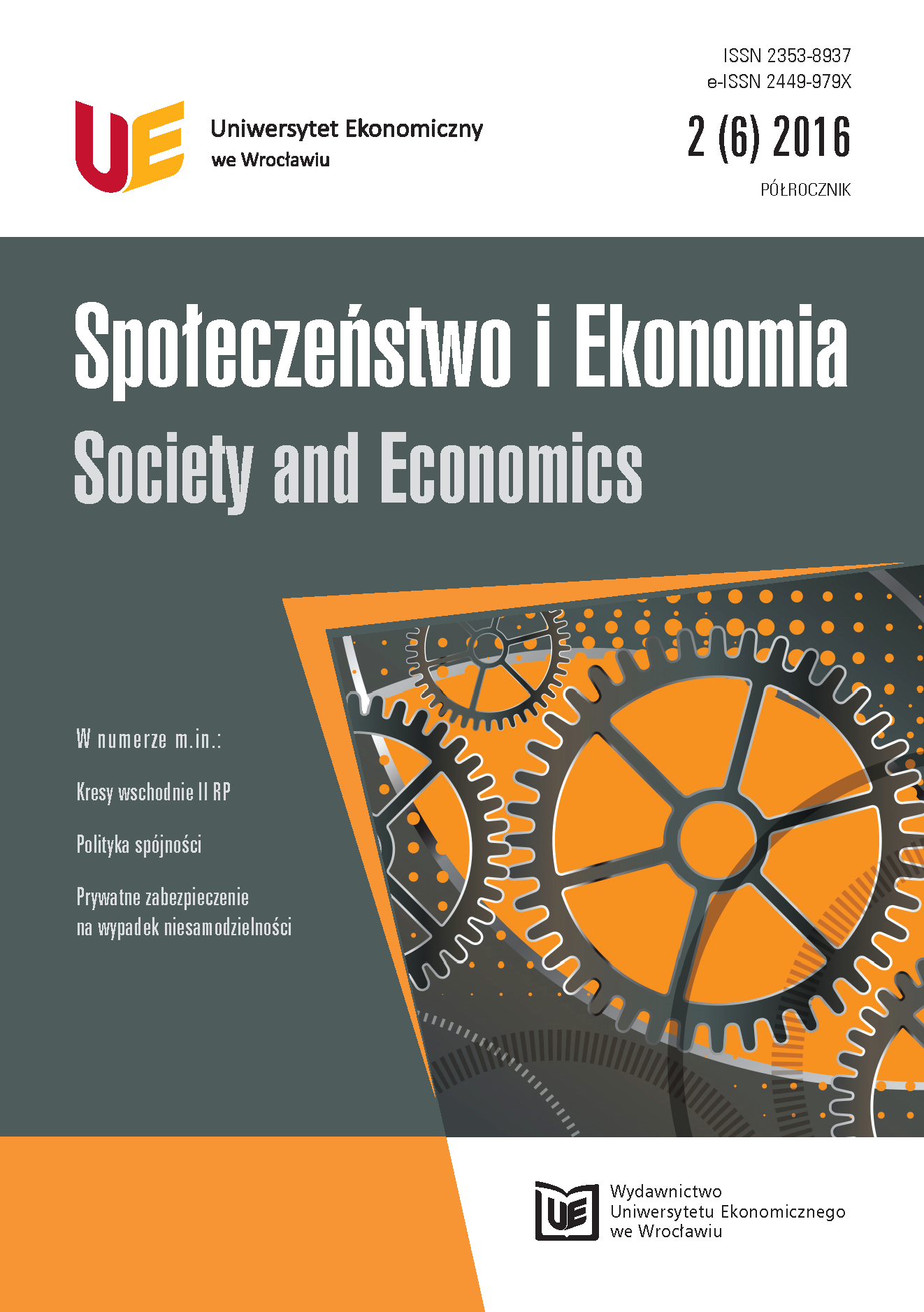Wpływ polityki spójności Unii Europejskiej na zmniejszenie międzyregionalnej luki rozwojowej w Polsce
Impact of cohesion policy of the European Union on the reduction of the interregional development gap in Poland
Author(s): Kamil Waligóra, Tadeusz TruskolaskiSubject(s): National Economy, Public Finances
Published by: Wydawnictwo Uniwersytetu Ekonomicznego we Wrocławiu
Keywords: convergence; regional policy; algorithm; GDP; unemployment
Summary/Abstract: Cohesion policy is one of the pillars of the European Union. Dedicated to economically weaker regions and funded by the affluent ones, it is a tool for correcting socioeconomic discrepancies. Starting the next − in the case of Poland the third − financial perspective encourages to summarize the impact of cohesion policy on reducing the development gap among the voivodeships. The first part of the paper presents the changes that have taken place in the cohesion policy of the European Union in the 20th and 21st century. Then, on the basis of available statistical data the author assessed the way of distribution of funds among the voivodeships in Poland in over two financial perspectives: 2004-2006 and 2007-2013. As in the Lisbon Strategy, which identified three key areas of regional policy, the author adopted measures on social, economic and territorial impact. In this manner fragmentary efficiency of the allocation of funds from the EU budget between the voivodeships was specified. The causes of delay in implementing European funds in financial perspective 2014- -2020 were also identified. Finally, the conclusions that can be used in the preparation of cohesion policy for the period after 2020 were presented. It was concluded that the adopted algorithms for the allocation of funds supported the areas already possessing competitive advantages. It has been observed that the strongest economic regions have maintained the status quo, and the less developed ones have remained far from the national average. Cohesion policy objectives have been achieved in a relatively small degree, which should affect the future change of criteria for the allocation of funding. Moreover, it was concluded that bureaucracy was becoming the key problem in implementing European funds. It is therefore essential to simplify the procedures in order to enable more efficient spending of the funds.
Journal: Społeczeństwo i Ekonomia
- Issue Year: 2016
- Issue No: 06
- Page Range: 87-102
- Page Count: 16
- Language: Polish

